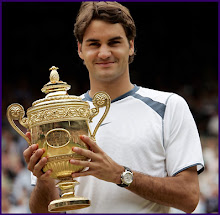At the age of 20, Rafael Nadal, a two-time champion at Roland Garros, has already etched his name near the top of the list of the best clay-court players the game has ever seen. But thanks to his monster forehand, he’s a contender on all other surfaces as well. Here’s how he generates so much power and spin with it.
1. Nadal’s preparation for his forehand is outstanding. Here you can see that he’s loaded and ready to go. His racquet is back, his shoulders are fully turned, his back is pretty straight— which I really like—and his legs are low and spaced well, giving him a wide base from which to hit. He’s using a full Western grip, which is great for generating topspin.
2. Nadal’s racquet is in virtually the same place as in the first frame, but he’s still adjusting his feet, leading me to think he may have gotten a bad bounce. Normally, I like to see continuous momentum with the racquet throughout the swing. Here it looks as if he might have checked his swing slightly. Even so, he’s doing a good job of getting his back leg almost behind the ball.
he’s low to the ball. I prefer to see a player get down with his legs like Nadal does rather than bend at the waist.
4. Nadal is pulling the right side of his body around first, and his left side is dragging behind. This helps him load up more power until he’s ready to let his swing rip. He’s beginning to come up with his legs, but, contrary to what you might expect, his weight is shifting toward his back foot rather than to his front, the way tennis players are traditionally taught.
5. Here you clearly see one of the more unusual aspects of Nadal’s forehand. Typically, players who use a Western grip make contact close to their bodies and with a pronounced elbow bend. But Nadal strikes the ball with his left arm almost fully extended. Plus, he’s hitting the ball completely off his back foot, but his right side has come through and his upper body is open.
6. In this frame we can see how today’s forehand differs from the typical forehand of the 1970s and ’80s. Nadal and most pros these days have what I call a “windshield wiper” swing. This means that after he makes contact, Nadal swings his racquet across his body and flips it over, using the same motion as a windshield wiper. In the past, players typically extended through the hitting zone before following through to the other side of their bodies.
7. Another difference between today’s forehand and the one used in my era is that we were taught to follow through high and in the direction of our target and catch the racquet with our opposing hand. That’s not the case here; Nadal’s racquet has gone past his right hand and continues to wrap around his midsection. His weight has finally started to move to his right foot.
8. Amazingly, Nadal’s racquet has finished completely around his body. Look at the position of his right shoulder in the first photo and notice his left shoulder in this one. He was looking over his right shoulder at the beginning and ended looking over his left. This rotation is a great checkpoint for everyone, regardless of the forehand you use. If you can go shoulder to shoulder, you’ll ensure a full stroke.


2 comments:
rafa rafa rafa.........
yipeeee
Thanks for that step-by-step breakdown of Nadal's forehand. Although I will not be able emulate this great player completely, there are some real good tips to keep in mind to get that killer forehand.
Thanks once again.
LN
Post a Comment